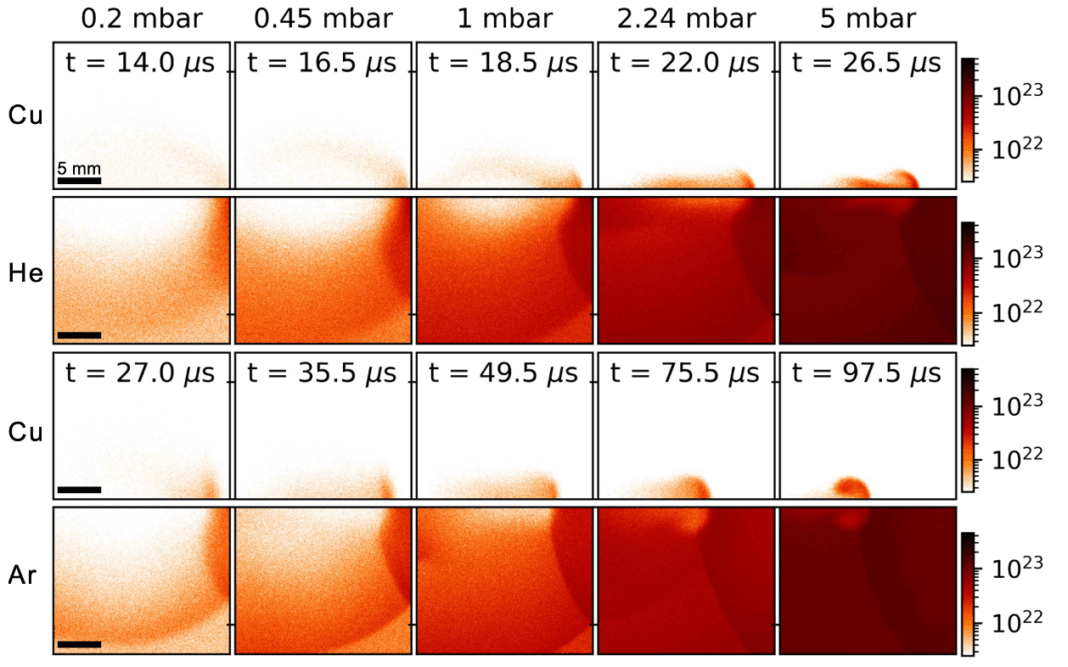Scientists around the world have extensively studied the expansion of laser-produced plasma (LPP) and the shock waves it generates in a background gas. However, little attention has been given to how the reflected shock wave—one that bounces back from a surface—affects the expanding plasma, despite its potential impact on LPP behavior.
Dr. Rommil Emperado, Dr. Myles Allen Zosa, and Dr. Wilson Garcia of the University of the Philippines – Diliman College of Science’s National Institute of Physics (UPD-CS NIP), together with Dr. Lean Dasallas of the UPD-CS Materials Science and Engineering Program (MSEP), analyzed the interaction of copper LPP with surrounding gas through the direct simulation Monte Carlo (DSMC) method, which simulates particle behavior using random numbers.
Simulating Copper LPP Behavior
Using the DSMC method, the researchers modeled how the plasma plume—a cloud of hot, charged particles that rapidly expands from the target surface, similar to a tiny, high-speed explosion—behaves in a vacuum and in noble gases used for film deposition. They also simulated how shock waves form and propagate under different background gas pressures.
Collisions between the shock wave and the plume significantly affected the energy and shape of the LPP even before it reached the substrate—the surface where the thin film is formed—sparking the researchers’ interest. “When the shock wave collides with the plume that produced it, I only expected the plume energy to further decline when it loses energy to collisions,” Emperado said. “It’s surprising how the effect of plume-shock collisions also depends on the choice of background gas species.”
Emperado shared that, in the simulation, collisions between the copper plume and the shock wave in argon slightly increased the plume’s mean kinetic energy, while the opposite effect was observed when the plume collided with the shock wave in helium. This shows that reflected shock waves impact the LPP’s behavior.
Real-world Applications of LPP
LPP has interesting applications, from fabricating superconducting thin films to detecting trace elements on Mars. While many experiments have explored laser-produced shock waves in surrounding gas, this is the first study to ask: What if these shock waves reflect off a substrate? What happens when the reflected shock collides with the very plume that created it? This research also opens up more possibilities for real-world applications of LPP.
“Our findings could help improve how nanofoams and nanoparticles are created using pulsed laser deposition. Knowing how the plume interacts with reflected shock waves would help predict the plume’s behavior even before it reaches the surface to form nanostructures,” Emperado added. This could lead to more precise control over the size, shape, and quality of nanomaterials used in advanced technologies.
For interview requests and other concerns, please contact media@science.upd.edu.ph.
References:
Emperado, R. B., Allen, M., Dasallas, L. L., & Garcia, W. O. (2025). Direct simulation Monte Carlo modeling of shock-plume interactions during laser-produced plasma expansion in a background gas. Physics of Fluids, 37(3). Retrieved from https://doi.org/10.1063/5.0256724


